Ask Texas Tree Surgeons: What Are the Bumps on My Pecan Leaves?

Another installment in our series of posts where Texas Tree Surgeons answers your tree questions. Are you having problems with your trees and want to know what’s wrong? Let us know!
As we move into summer, there are several tree health issues that can present themselves. One of the common questions we get around this time is about bumps on pecan leaves. The bumps are the result of insect activity that may or may not affect the pecan fruits themselves. Unfortunately, once the bumps appear, there is no effective control for the pests. Still, knowing what is afflicting the tree means you can make preparations for treatment next year.
Pecan Phylloxera
The insect that causes the bumps to appear on pecan leaves is called pecan phylloxera (Phylloxera devastatrix). Pecan phylloxera is a small, aphid-like insect that feeds on the shoots, leaves, and buds of the pecan tree. There are two main types of pecan phylloxera: one that affects leaves only, and one that affects leaves and nuts. The leaf phylloxera can cause defoliation but generally do no greater harm to the tree. The other kind, however, can cause severe leaf drop and inedible fruits. As both kinds of phylloxera cause leaf bumps, called “galls,” it can be hard to tell which one is affecting your pecans. However, if you have a lot of leaves falling, there is a good chance that it is the more invasive phylloxera.
No matter what particular kind of pecan phylloxera is present, the insects follow a similar life cycle. In the summer, eggs are laid in the bark of the pecan tree. The eggs hatch in the spring and the young insects move to the shoots and buds, where they begin to feed, forming galls on the new leaves for protection. Once the phylloxera have matured, they emerge from the galls to mate and lay eggs for the next year.
Treatment for Pecan Phylloxera
Because of their life cycle, the only effective time to treat for pecan phylloxera is in the spring, just as the leaves are budding. Applying insecticide at bud break can prevent the phylloxera from becoming established in the new leaves. Once the galls have formed, the insects are protected from pesticides, and cannot be effectively treated.
Pecan phylloxera moves slowly and may not affect every tree in an area every year. Variations in weather and tree growth can greatly affect the ability of the insects to survive. Still, if you have bumps on your pecan leaves, it is best to plan for insecticidal treatment for pecan phylloxera the following spring.
At Texas Tree Surgeons, we love trees and we love our customers! We know it can be frustrating to find out about a problem too late to do anything about it. Hopefully, learning about pecan phylloxera now will help you be prepared for treatment in the spring. If you have questions about bumps on your pecan leaves, let us know, and a certified arborist can confirm what is affecting your tree and what you can do about it!
Related Blogs
Similar blogs related to this topic


Top 10 Things We'd Tell You as an Arborist if We Weren't Afraid of Hurting Your Feelings
This is a list of tree care worst practices that you, or someone you know may be guilty of. Read the following list at your own risk. You’ve been warned, feelings may get hurt. 1.…
Read more

Avoid These Tree Care Mistakes for a Healthy Landscape
Below is a list of overlooked mistakes that could jeopardize the health of your trees. From missteps in pruning to incorrect watering practices, discover how to give your trees the care they deserve. Red oak…
Read more

Why do Arborists Recommend Soil Sampling in Urban Areas like Dallas?
Soil sampling is a crucial practice in urban areas like Dallas. It helps arborists make informed decisions about your landscape to ensure a healthy urban ecosystem. Our native soils vary widely—from the dense clays of…
Read more
